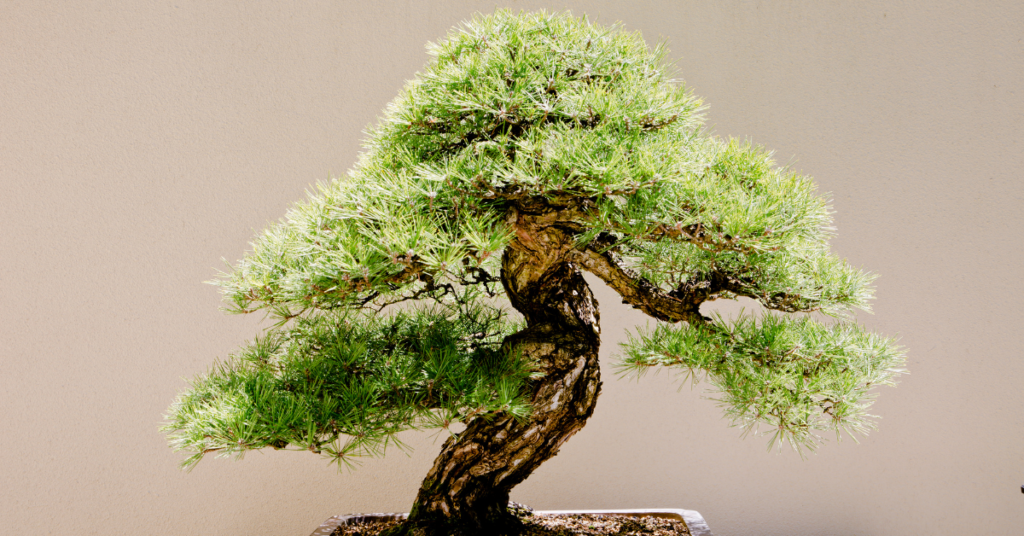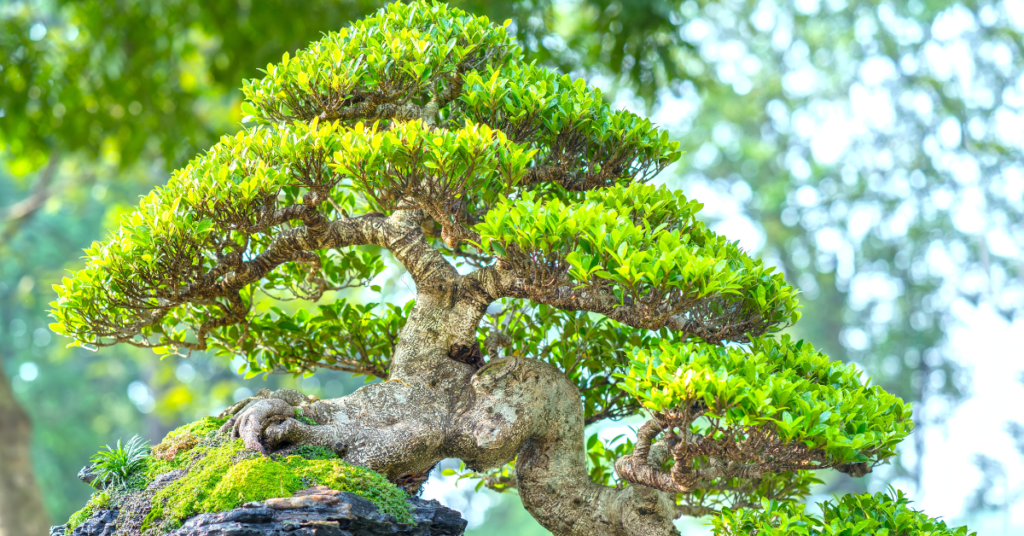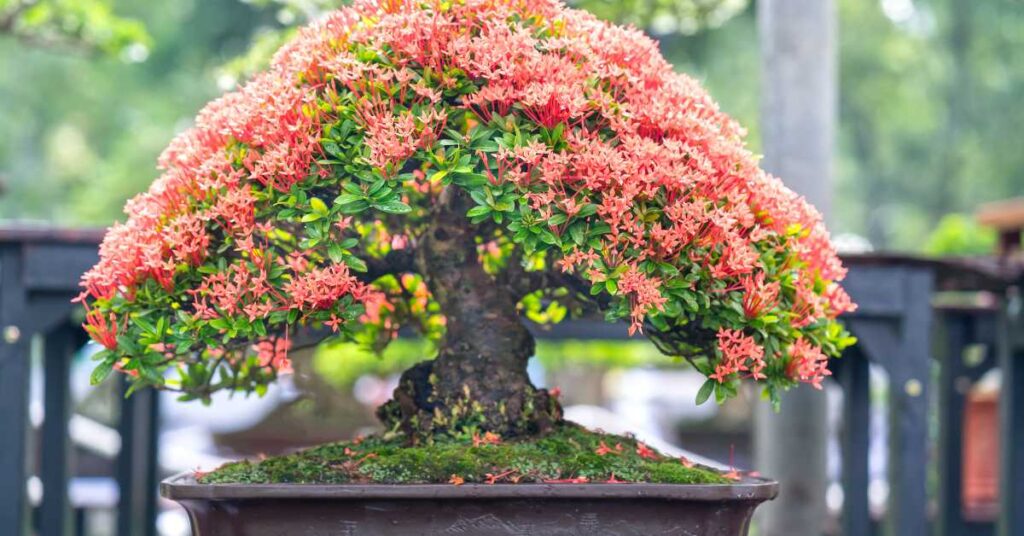Can bonsai trees grow indoors? Yes, bonsai trees can absolutely grow indoors, provided they receive the appropriate care and attention. Choose indoor-friendly species, such as Ficus, Jade Plant, Chinese Elm, Schefflera Arboricola, or Serissa Foetida, and ensure they have access to adequate light, either from a natural source or artificial lights. Maintain optimal temperature and humidity levels, use well-draining soil, and follow a proper watering, fertilizing, and pruning routine. By meeting these essential needs, your indoor bonsai tree can thrive and serve as a beautiful and serene addition to your living space.
As a bonsai enthusiast, I often get asked if these miniature marvels can grow indoors. The answer is a resounding yes! In this blog post, I’ll walk you through everything you need to know about growing bonsai trees indoors. From selecting the right tree to understanding the indoor growing process, we’ll cover it all. So, let’s embark on this exciting journey together!
Can bonsai trees grow indoors in any conditions?
No, of course not. Bonsai trees can grow indoors if you provide the correct conditions. These conditions include proper lighting, room temperature, humidity, and watering. If you can meet these needs then you can grow a bonsai tree indoors with pretty good success.

How long do Bonsai trees last indoors?
The lifespan of a bonsai tree indoors depends on various factors, including the species, care provided, and the tree’s overall health. With proper care and attention, indoor bonsai trees can live for many years, sometimes even outliving their outdoor counterparts. Some bonsai trees, such as Ficus and Chinese Elm, can last for decades or even centuries when given the right environment and care.
A crucial aspect of ensuring a long and healthy life for your indoor bonsai tree is providing consistent and diligent care. This includes monitoring light exposure, maintaining ideal temperature and humidity levels, using well-draining soil, and adhering to a proper watering, fertilizing, and pruning schedule. In addition, regularly inspecting your tree for signs of pests or diseases and taking prompt action can prevent potential issues from shortening its lifespan.
Bonsai trees can enjoy a long life indoors when their specific needs are met and they receive proper care. This not only allows you to appreciate the beauty and serenity of your bonsai tree but also offers an opportunity to develop your skills and form a deeper connection with the art of bonsai cultivation.
What are the main types of bonsai trees suitable for growing indoors?
Before we dive into the details, let’s explore the various types of bonsai trees that thrive indoors. While many bonsai species can adapt to life indoors, some are more suited to the task than others. Here are the top five indoor-friendly bonsai trees:
- Ficus bonsai
- Jade Plant bonsai
- Chinese Elm bonsai
- Schefflera Arboricola (umbrella tree)
- Serissa Foetida (tree of a thousand stars)
Ficus bonsai
The Ficus family comprises over 800 species, with some being ideal for indoor bonsai cultivation. These trees are hardy, adaptable, and can tolerate lower light conditions, making them perfect for the indoor environment.
- Light requirements: Bright indirect light or partial shade
- Temperature range: 60-80°F (15-27°C)
- Humidity range: 40-60%
Jade Plant bonsai
Crassula ovata, commonly known as the Jade Plant, is a popular choice for indoor bonsai enthusiasts. This succulent plant is low-maintenance and can tolerate a wide range of conditions.
- Light requirements: Full sun to light shade
- Temperature range: 50-80°F (10-27°C)
- Humidity range: 40-50%
Chinese Elm bonsai
The Chinese Elm (Ulmus parvifolia) is a versatile and attractive bonsai tree that can be grown both indoors and outdoors. They are relatively easy to care for and can adapt to a wide range of conditions.
- Light requirements: Bright indirect light or partial shade
- Temperature range: 60-75°F (15-24°C)
- Humidity range: 50-60%
Schefflera Arboricola (umbrella tree)
Schefflera Arboricola, also known as the umbrella tree, is an excellent choice for beginners. It’s a resilient plant that can tolerate a wide range of conditions and requires minimal pruning.
- Light requirements: Bright indirect light or partial shade
- Temperature range: 60-80°F (15-27°C)
- Humidity range: 40-50%
Serissa Foetida (tree of a thousand stars)
Serissa Foetida, or the tree of a thousand stars, is a beautiful flowering bonsai tree. It’s well-suited for indoor growth, but it requires a bit more attention compared to other species.
- Light requirements: Bright indirect light or partial shade
- Temperature range: 60-75°F (15-24°C)
- Humidity range: 50-60%
How do you choose the right bonsai tree for your indoor environment?
Now that you’re familiar with some popular indoor bonsai tree species, it’s time to learn how to choose the right one for your environment. Here are a few factors to consider when selecting a bonsai tree for indoor growth.
Assessing your indoor space and conditions
First, take a good look at your indoor space. Consider the following:
- Available space for the bonsai tree
- Amount of natural light
- Room temperature and humidity levels
By evaluating these factors, you’ll be better equipped to choose a bonsai tree that suits your indoor environment.
Light requirements
Each bonsai species has its unique light requirements, ranging from full sun to partial shade. It’s essential to match the tree’s needs with the available light in your space. For example, if you have a room with ample natural light, you might opt for a Jade Plant bonsai that thrives in full sun. Conversely, if your space has less natural light, a Ficus bonsai might be a better choice.
Temperature and humidity considerations
Temperature and humidity are crucial factors to consider when choosing an indoor bonsai tree. Most indoor bonsai trees prefer a temperature range of 60-80°F (15-27°C), while humidity requirements can vary between 40-60%.
Ensure that your indoor environment can provide the necessary temperature and humidity levels for your chosen bonsai tree. If needed, you can use a humidifier or place a tray filled with water and pebbles beneath the tree to increase humidity.

What are the specific care requirements for indoor bonsai trees?
Caring for indoor bonsai trees involves several key aspects, including watering, soil composition, fertilizing, pruning, and pest management. Let’s explore each of these in more detail.
Watering techniques and frequency
Proper watering is crucial for maintaining a healthy bonsai tree. Here are a few general guidelines:
- Water your bonsai tree when the top 1-2 inches of soil feels dry to the touch.
- Use a gentle watering technique, such as a watering can with a fine nozzle or a spray bottle.
- Ensure that excess water drains away to prevent root rot.
Each bonsai species has its specific watering needs, so be sure to research your tree’s requirements and adjust accordingly.
Soil composition and fertilizing
Bonsai trees require a well-draining soil mix that retains moisture and provides adequate aeration for the roots. A typical bonsai soil mix consists of:
- Akadama (Japanese volcanic clay)
- Pumice or lava rock
- Organic potting compost
In addition to the right soil, your bonsai tree will need regular fertilizing. Use a balanced fertilizer (such as 10-10-10) and apply according to the manufacturer’s instructions.
Pruning and shaping
Pruning and shaping are essential for maintaining the desired size and appearance of your bonsai tree. Here’s a basic outline of the pruning process:
- Remove dead or unhealthy branches.
- Trim back overly long branches to encourage new growth.
- Shape the tree by removing or wiring branches to achieve your desired look.
Remember to use sharp, clean pruning tools and be mindful of the tree’s natural growth pattern.
Pest management
Pests can be a challenge for indoor bonsai trees. Common pests include spider mites, aphids, and scale insects. To prevent and manage pests:
- Inspect your tree regularly for signs of infestation.
- Use insecticidal soap or neem oil to treat minor infestations.
- For severe infestations, consult a bonsai expert or local nursery for advice.
How can you provide the best lighting for your indoor bonsai tree?
Proper lighting is crucial for the health and growth of your indoor bonsai tree. Here’s how to ensure your tree receives adequate light:
Natural light sources and placement
Maximize natural light by placing your bonsai tree near a window that receives bright, indirect sunlight. If you have limited natural light, consider rotating your tree between different locations to ensure even light exposure.
Artificial light options and setup
If your indoor space lacks sufficient natural light, you can supplement it with artificial lighting. Here are some options to consider:
- Fluorescent lights: These are energy-efficient and provide a broad spectrum of light that mimics natural sunlight. Place your bonsai tree 6-12 inches below the light for best results.
- LED grow lights: LEDs are another energy-efficient option, producing a targeted light spectrum for optimal plant growth. Position your tree 12-24 inches below the light source.
- High-intensity discharge (HID) lights: HID lights, such as metal halide or high-pressure sodium bulbs, are powerful options for indoor plant growth. However, they tend to produce more heat and require adequate ventilation. Place your bonsai tree 24-36 inches below the light.
When using artificial lights, it’s essential to adjust the distance between the light source and your tree as it grows. If you put your bonsai too close to your light you could end up with sunscald (yes, I know its not technically from the sun) on your tree. Aim for 12-16 hours of light per day, depending on the specific needs of your bonsai species.
What are common challenges faced when growing bonsai trees indoors?
Growing bonsai trees indoors can present a few challenges. Here are some common issues and how to address them:
Ensuring adequate humidity
Indoor environments often have lower humidity levels, which can stress bonsai trees. To maintain proper humidity:
- Place a tray filled with water and pebbles beneath the tree.
- Use a humidifier in the room where your tree is located.
- Mist your tree with water regularly.
Preventing root rot
Overwatering can lead to root rot, a potentially fatal condition for bonsai trees. To prevent root rot:
- Ensure that your tree’s pot has drainage holes.
- Use a well-draining soil mix.
- Water only when the top 1-2 inches of soil are dry to the touch.
Dealing with pests and diseases
Regular inspection and early intervention are crucial for managing pests and diseases. Follow the pest management tips mentioned earlier and consult a bonsai expert or local nursery for advice on specific issues.

Can you transition an outdoor bonsai tree to an indoor environment?
Yes, it’s possible to transition an outdoor bonsai tree to an indoor environment. However, it’s essential to do so gradually and to consider the specific needs of your tree. Here’s how:
Assessing the suitability of your tree for indoor growth
First, determine if your tree is suitable for indoor growth. Some species, such as the Chinese Elm, can thrive both indoors and outdoors. If your tree is a suitable candidate, proceed with the transition process.
Gradual acclimatization process
To help your tree adapt to the indoor environment, follow these steps:
- Bring your tree inside for a few hours each day, gradually increasing the duration over 2-3 weeks.
- Place your tree near a window with bright, indirect light.
- Monitor your tree closely for signs of stress, such as leaf drop or wilting. If necessary, adjust the light, temperature, and humidity conditions.
Ongoing care adjustments
Once your tree is fully acclimated to the indoor environment, continue to provide proper care, including watering, fertilizing, and pest management. Keep in mind that your tree’s needs may change slightly in its new environment, so be prepared to make adjustments as needed.
What are some creative ways to display your indoor bonsai tree?
Your indoor bonsai tree is not only a living piece of art but also a focal point in your home. Here are some creative ways to display your tree:
Bonsai shelves and stands
Consider using a bonsai shelf or stand to showcase your tree. These specialized stands come in various styles and materials, allowing you to find the perfect fit for your home’s decor.
Combining with other houseplants
Incorporate your bonsai tree into a group of houseplants, creating a mini indoor garden. This arrangement can enhance the visual appeal of your space while also helping maintain humidity levels for your bonsai and other plants.
Using decorative pots and trays
Choose a decorative pot or tray that complements your bonsai tree and your home’s style. From traditional Japanese ceramics to modern minimalist designs, there’s a pot or tray for every aesthetic preference.
FAQs
Here are some common questions about growing bonsai trees indoors:
Are bonsai trees high maintenance?
Bonsai trees are often perceived as high-maintenance due to the level of care and attention required to maintain their miniature size, shape, and overall health. However, the degree of maintenance varies depending on the species of bonsai tree and the individual grower’s expertise.
Some bonsai trees, such as Jade Plant and Schefflera Arboricola, are considered low-maintenance and beginner-friendly, while others, like Serissa Foetida, may demand more attention.
Caring for a bonsai tree involves several key aspects, including watering, soil composition, fertilizing, pruning, and pest management. Each of these elements requires a certain level of diligence and care to ensure the tree’s health and aesthetics.
For example, proper watering is essential to prevent overwatering or underwatering, both of which can cause stress or even death to the tree. Pruning and shaping, on the other hand, require precision and patience to maintain the desired appearance and prevent excessive growth.
Despite the maintenance involved, many bonsai enthusiasts find the process to be therapeutic and rewarding. As you develop your bonsai care skills, you’ll likely find that the time and effort invested in maintaining your tree become an enjoyable and meditative practice. Furthermore, the stunning results of your efforts—a healthy, beautifully shaped bonsai tree—make the maintenance worthwhile.
While bonsai trees can be considered high-maintenance compared to other houseplants, the level of care required depends on the specific species and the grower’s experience. For many enthusiasts, the process of nurturing and shaping a bonsai tree is a fulfilling and rewarding aspect of the hobby, making the maintenance more of a pleasure than a chore.
Conclusion
Growing bonsai trees indoors is not only possible but also incredibly rewarding. With the right species, proper care, and a little creativity, you can cultivate a stunning living work of art that brings beauty and tranquility to your indoor space.
Now that you’re equipped with the knowledge and tips needed to grow bonsai trees indoors, it’s time to embark on your own bonsai adventure. Happy growing, fellow bonsai enthusiasts!



